When I was growing up, we used to have competitions for nearly everything: highest jump, fastest sprint, and even, the longest to hold their breath underwater. So, it’s no surprise that on the occasion we had that delicious, sticky bubble gum, we also would compete to see who could blow the biggest bubble. Well, let me tell you, nothing ruins the fun of a good bubble-blowing competition more than getting your giant, award-winning bubble stuck to your hair. At one point, I was banned from chewing bubble gum, as I had managed to get my hair impossibly stuck one-too-many times.
 Photo by Marlene Bauer on Unsplash
Photo by Marlene Bauer on Unsplash
I tell you this story, not only to serve as a fair warning for those looking to engage in a bubble-blowing battle, but I also want to take this opportunity to segway into today’s topic: “sticky units of sound.” You see, just like hair to bubble gum, sounds can also stick together, making them a bit challenging to read and spell. That’s where today’s topic comes in. My intention today is to give you the tools and the knowledge to teach these sounds to your students so that they don’t find themselves in a sticky situation. This will be the first in a series of four blogs related to sticky units of sound, so let’s dive in!
Before You Begin
Before teaching these concepts to your student, make sure they can…
Overview: What is a Unit of Sound?
Just as bubble gum sticks to hair, units are often composed of three letters that “stick” together to make a strange sound. Why strange? Well, at first sight, a unit looks like a typical closed syllable, meaning the vowel appears to be closed off by a consonant. However, in a closed syllable, the vowel will always make its short sound. In a unit, the vowel may not follow that pattern or any specific pattern for that matter! Therefore, units cannot be sounded out, and they can be pretty tricky if not explicitly taught. The letters in a unit are “sticky” because they can’t be broken apart into individual letter sounds.
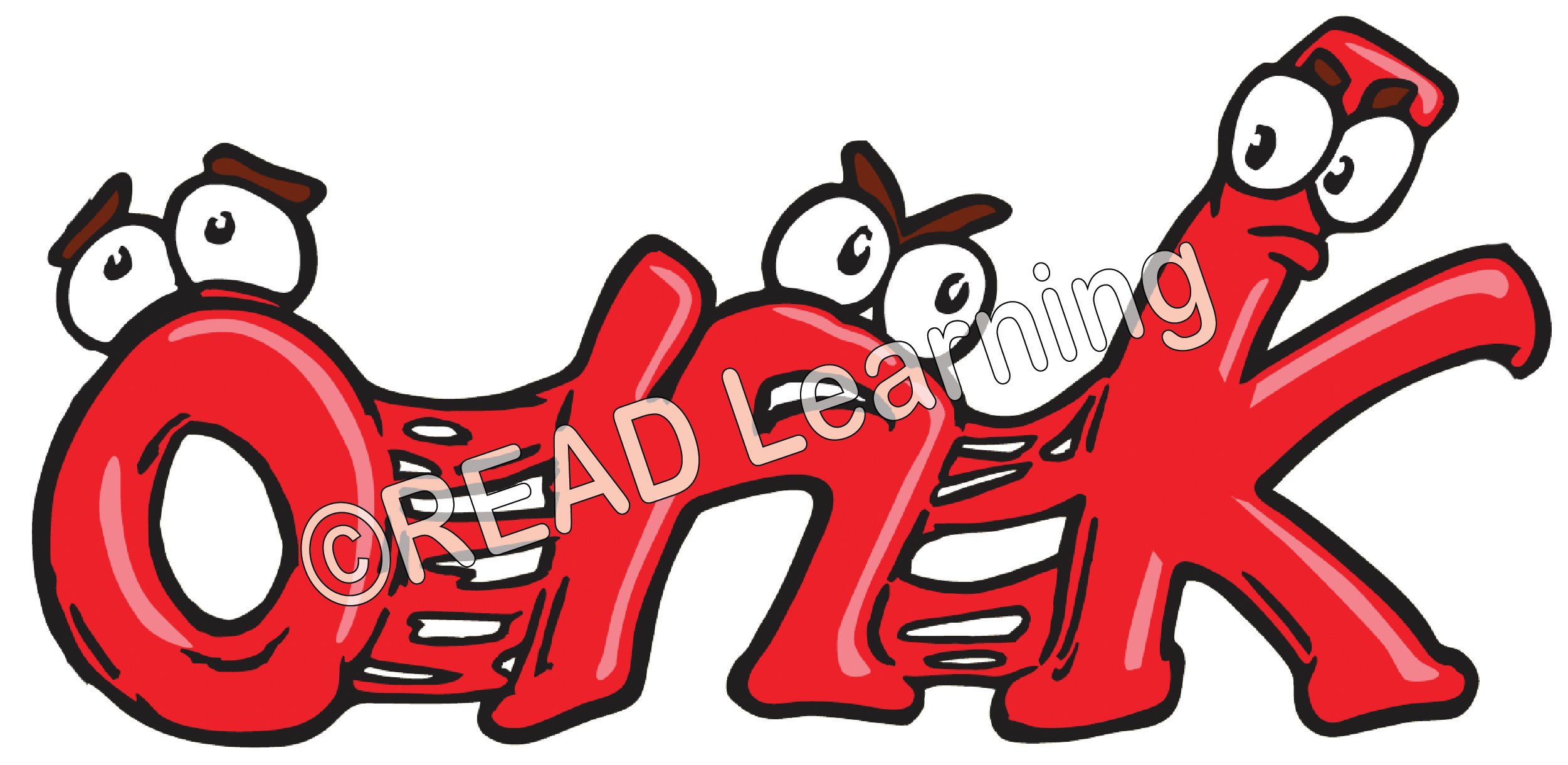
Units are very common within the English language. In fact, they are so common, that when a word contains a unit, we describe that word as having a Unit Syllable. Often, we mark those syllables by placing a box around the unit letters. I will show you how this looks later in the blog.
Speaking of syllables, when you’re teaching your students about vowel sounds, it’s also crucial to teach them how to classify syllables in order to build strong phonemic awareness skills. Therefore, we’ve created a fun, FREE resource to help teach syllable types. This resource includes visuals and descriptors of all 7 types of syllables including unit syllables. Included in this resource is the clever illustration of unit syllables above! Check it out on our website at this link.
Sticking to the Subject
There are so many units in our language that it’s easiest to put them into groups or as I like to call them, unit ‘families.’ When we group large lists of items together, it makes them easier to remember. The first four units we cover today is the -NG family. As you’ve probably guessed, each unit in this family ends with -NG.
When I teach units, I begin by showing my student the list of units shown above. Then, I like to ask my student if they recognize any of the units. In this set, students often recognize -ING, as this unit is quite common in high-frequency words. After looking at the units in isolation, I place a letter in front of each unit to create a real, recognizable word and read each word out loud, asking my student to repeat after me. Ideally, I keep the letter the same in front of each unit. It looks something like this:
Next, say each unit out loud in isolation, and ask your student to repeat each isolated unit sound after you. At this point, you may want to introduce a larger set of words that contain these units. Have your student place a box around the unit in each word like this:

Each unit is considered just one sound, so be sure to emphasize this to your student as you read and spell these words. Additionally, guide your student to recognize that units appear at the end of each word (or syllable) and never at the beginning.
The final step is to ask your student to create a “keyword” for each unit. A “keyword” serves as a memory trigger for the targeted sound. Ideally, your student will create a visual to correspond with their keywords. What’s really cool is that our second set of Silver Moon Spelling Rules includes Doodle-a-Rule Cards for students to write and doodle a picture of their unit sound keywords. These handy cards can also work as flashcards to review unit sounds. Click the link above to find out more information on how to purchase Silver Moon Spelling Rules, Set 2.
Multisensory Strategies: Spelling Words with Units
We know that our students learn best when they can involve as many senses as possible. Although reading and spelling naturally involve the senses of sight and hearing, there is a way to also involve the tactile, or touch, sense. When students are spelling, we encourage them to split their words into individual sounds to ensure that every letter and sound is accounted for. Here’s how I have students do that:
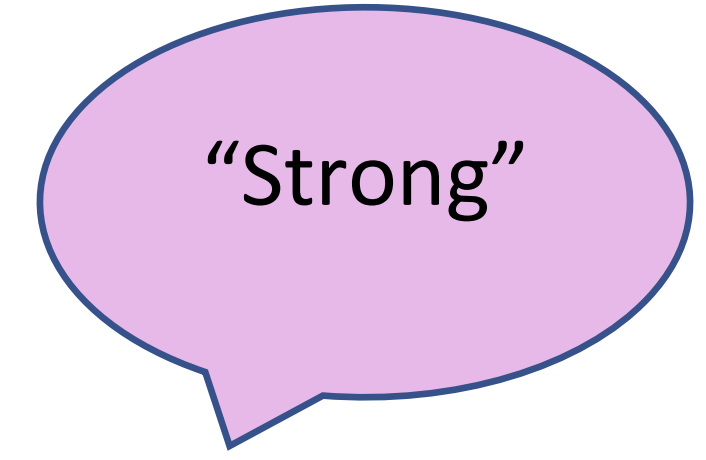
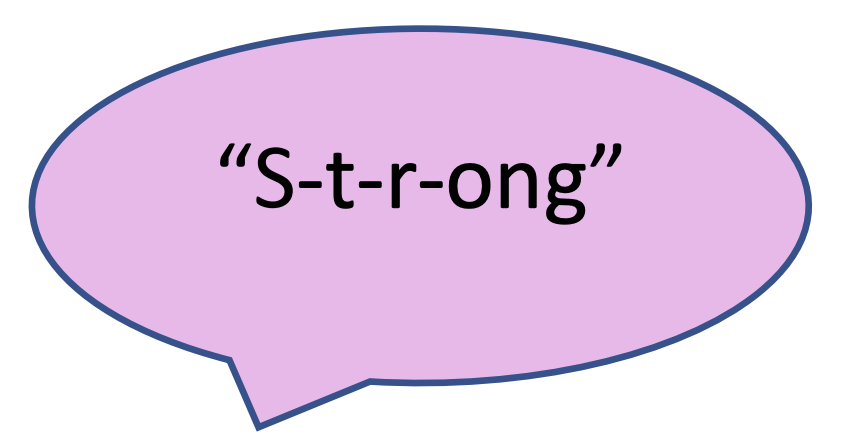 Note: make sure that your student keeps the unit as one sound (“ong” vs “o-n-g”).
Note: make sure that your student keeps the unit as one sound (“ong” vs “o-n-g”).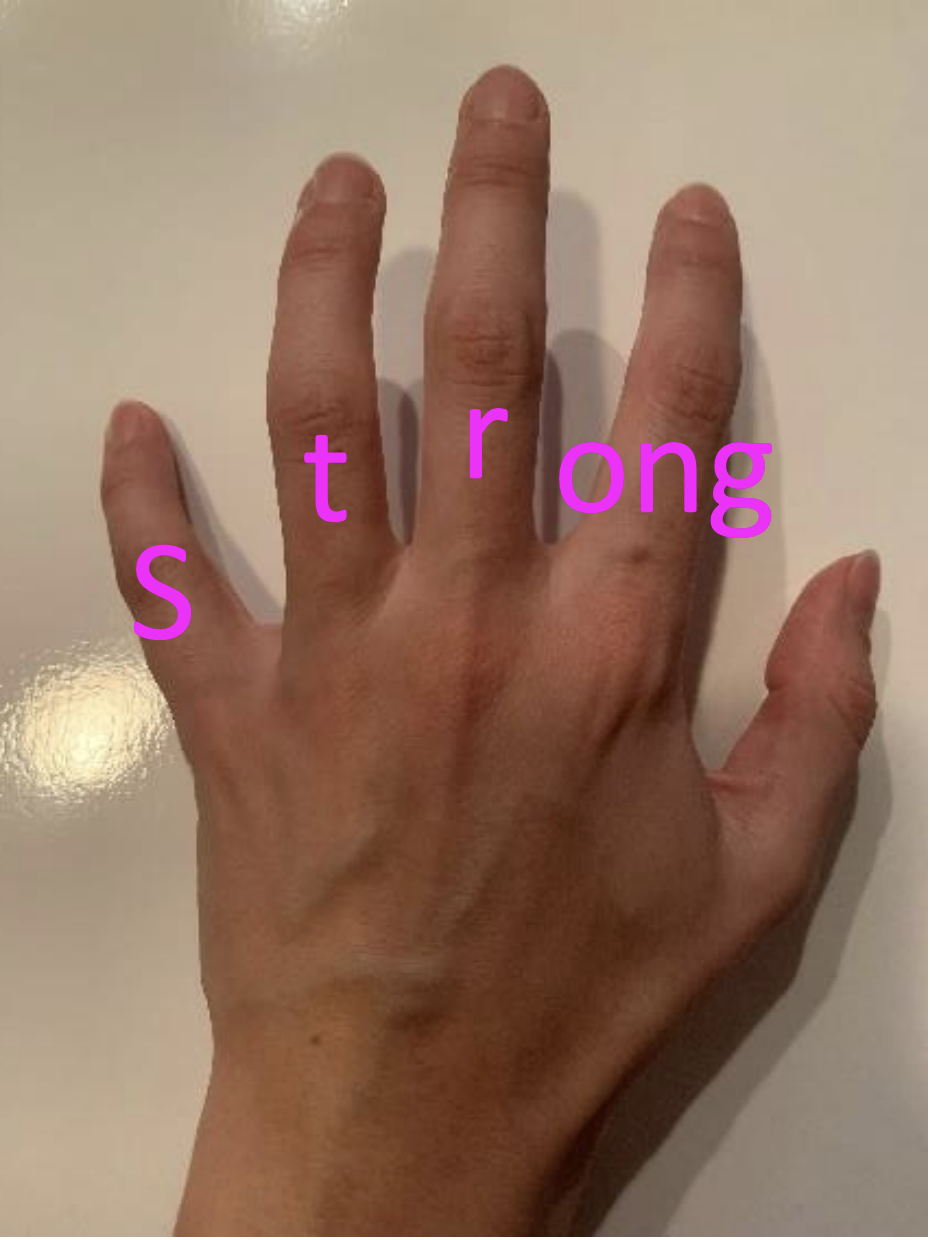 Note: students should tap the sounds using their non-writing hand, leaving their writing hand available for the next step. Lefties will tap beginning with the thumb of their right hand, and righties will tap beginning with the small finger of their left hand.
Note: students should tap the sounds using their non-writing hand, leaving their writing hand available for the next step. Lefties will tap beginning with the thumb of their right hand, and righties will tap beginning with the small finger of their left hand.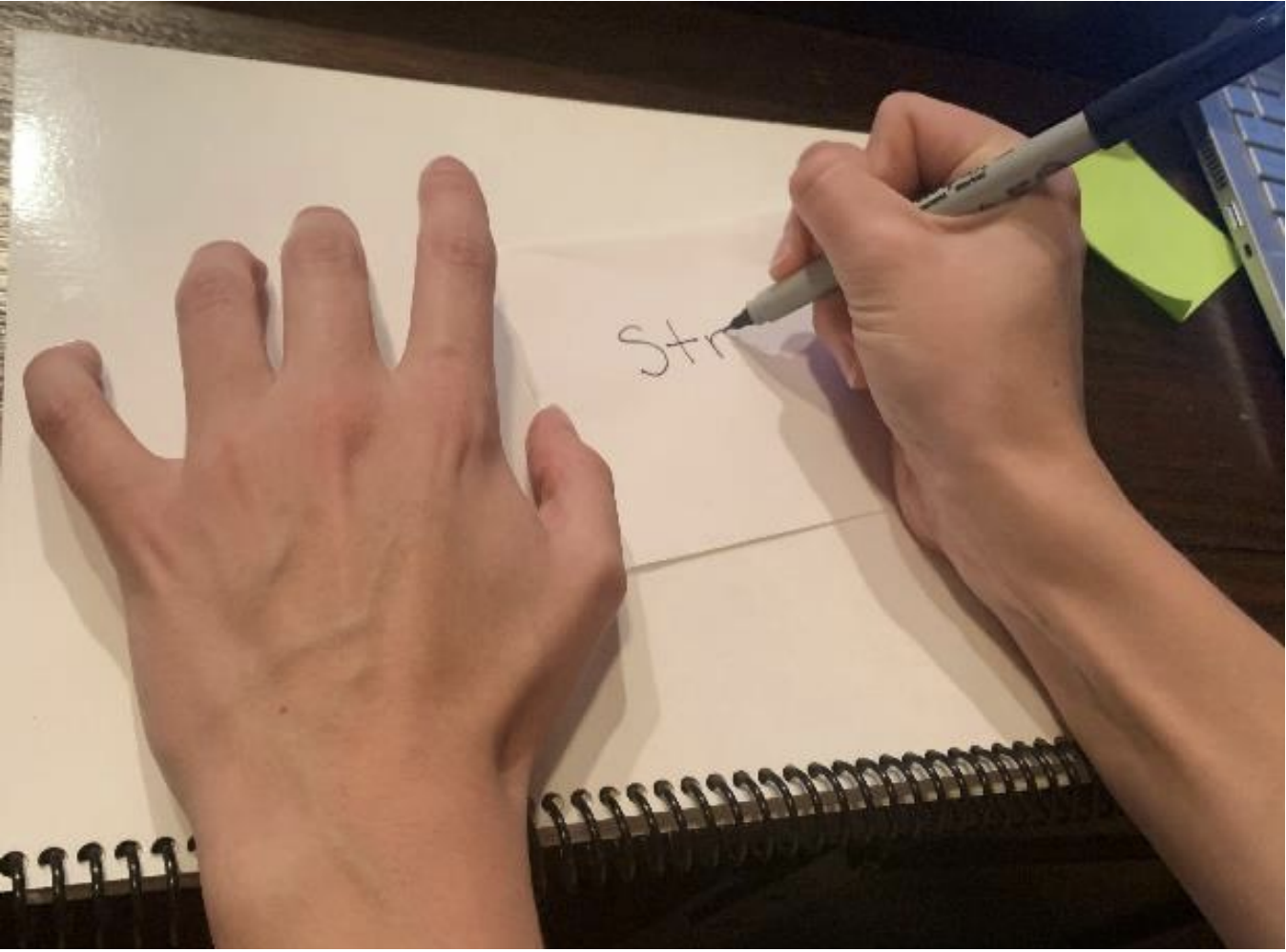 Note: as students get used to using this multisensory spelling strategy, they may choose to do this step simultaneously with step 3.
Note: as students get used to using this multisensory spelling strategy, they may choose to do this step simultaneously with step 3. 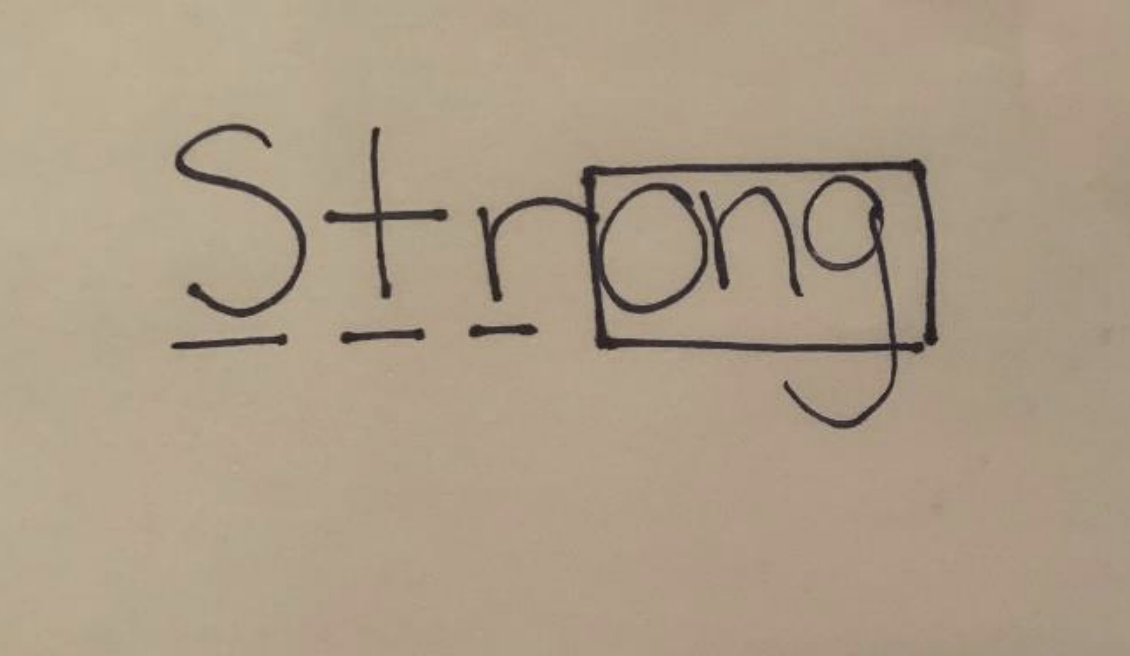 For a video demonstrating this strategy, please check out this link!
For a video demonstrating this strategy, please check out this link! “Stuck” on Reading Units?
Just when you think your student has mastered units, you may find that they still have difficulty transitioning from reading them in isolation to reading them within words. If this happens, I have a strategy to get them unstuck. Ask your student to locate and place a box around the unit first. Next, ask them to read just the unit out loud while checking their keyword to make sure they’ve said the unit correctly. Finally, once they have the correct unit sound in mind, they can read the entire word, tapping under each letter as they go. Using this trick may greatly increase accuracy as your students are learning units for the first time.
For a video demonstrating the touch-and-say reading strategy, please follow this link!
More Important Tips to Consider
One Last Thing
Now that I’ve given you quite a bit to chew on, I’ll leave you with a final surprise. Below, you’ll find a collection of FREE resources to assist in you in teaching these units. Simply pop on over to the link below!
Sticky Units of Sound Ending with -NG Reproducibles
As always, if you found this blog helpful, please share it with your fellow teachers, parents, and interventionists. Interested in learning more? You can find our other spelling topics HERE, and don’t forget to check out our complete guide to spelling at www.Silvermoonspellingrules.com
Happy Teaching!
Written by:
Kate Wagner, BSE
Reading Interventionist, Remote Learning Coach